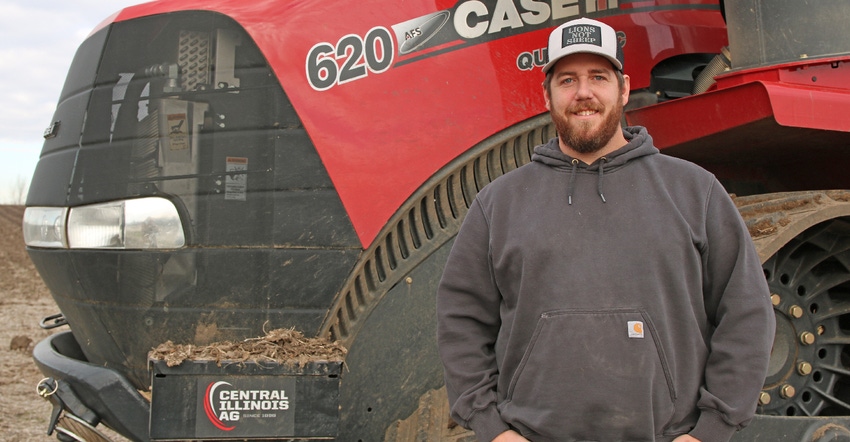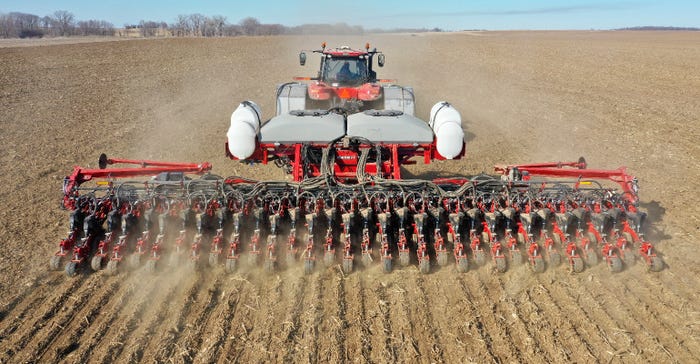
Farmer Jacob Wade of McLean, Ill., is preparing to expand 15-inch narrow rows across his farm’s entire 6,000-acre operation following the 2021 growing season.
Last season was the second of a three-year plan to experiment with 15-inch corn rows. In 2020, he found an 11-bushel-per-acre advantage growing various hybrids from industry leaders at a population of 40,000 seeds per acre.
“I’m sold, but I am also pretty high management on my corn,” Wade says.
Related: Narrow-row corn: Better than 30-inch?
Narrow rows may not be for everyone, Wade cautions. He sets himself up to receive the most benefit from the practice by adopting other yield-boosting improvements.
His farm has a split-tank Hagie sprayer, and they apply nitrogen and fungicide in the same pass in August. Then in another pass at tassel, they put more nitrogen and sulfur at the base of the plant. They also apply insecticides and micronutrients during that second pass.
“I’m spraying well into August, and most guys aren’t doing that,” Wade says, adding many farmers aren’t applying sulfur either. “Sulfur paid in 2020.”

He doesn’t have the equipment to go fully narrow row in 2021. He uses a Case IH 40-foot, 15-inch, 32-row precision planter for soybeans, and likewise uses the equipment in his narrow-row corn trial. He believes narrow rows are important for early-planted soybeans to reach canopy before the longest day of the year.
Related: Route 16 is magic line for narrow-row beans
Wade plans to buy another 15-inch-row precision planter soon as he enters the third year of the trial.
“After two years of having at least a 7-bushel increase, it just shows me it’s never going to be worse. It may never be a ton better, but narrow rows won’t have worse yields. And all I need to do really is get a permanent corn head,” Wade says.
He’s looking at a 60-foot, 15-inch-row planter for soybeans and can share the cost of it between crops.
“There are other people and equipment in the operation, which is why we haven’t switched [entirely] to narrow-row corn yet,” Wade says, noting narrow rows for high-management corn is a no-brainer now that the data is in.
About the Author(s)
You May Also Like




